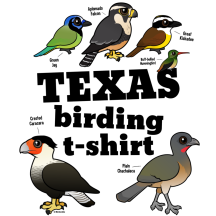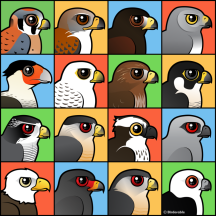Also known as: Northern Caracara, Northern Crested Caracara, Audubon's Caracara, Mexican Butterball, Mexican Eagle
The Crested Caracara, also known as the Northern Caracara, is a distinctive bird of prey with a broad, flat head and a prominent crest. It has a striking appearance with a black cap, a white neck, and a face marked with red around the base of the bill. The body features a mix of black and brown with white patches at the base of a long neck, and the tail is banded in black and white.
Native to the Americas, this species is commonly found in open or semi-open landscapes from the southern United States to South America. Unlike most falcons, Crested Caracaras are often seen walking on the ground. They are opportunistic feeders, scavenging for carrion as well as preying on small animals, including reptiles, amphibians, and other birds.
Crested Caracaras are known for their intelligence and resourcefulness. They often follow vultures to find food but are also skilled hunters themselves. They build large stick nests in trees, cacti, or even on man-made structures, where they lay two to three eggs annually.








































